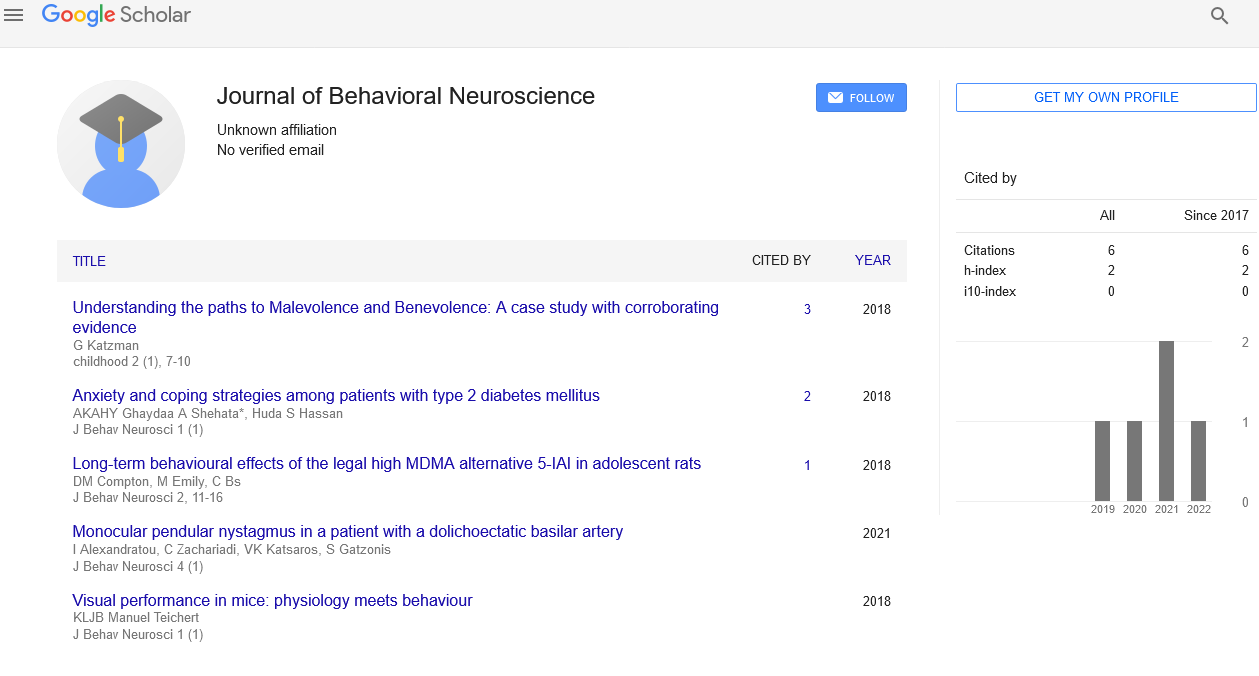Emotions and neuroscience
Received: 09-Mar-2021 Accepted Date: Mar 16, 2021; Published: 23-Mar-2021
Citation: Tripathi P. Emotions and neuroscience. J Behav Neurosci Res.2021;4(2):8.
This open-access article is distributed under the terms of the Creative Commons Attribution Non-Commercial License (CC BY-NC) (http://creativecommons.org/licenses/by-nc/4.0/), which permits reuse, distribution and reproduction of the article, provided that the original work is properly cited and the reuse is restricted to noncommercial purposes. For commercial reuse, contact reprints@pulsus.com
Commentary
Emotions are complicated programmes of activities produced by the presence of particular stimuli, external or internal to the body, when such stimuli activate certain neural systems, according to modern neurobiological neurology concepts. Emotional feelings, on the other hand, are emotional action programmes’ views. The triggering systems, the brain systems that carry out the action programme and the actions that make up each emotion’s ensemble were chosen over evolutionary time and made available to each organism of a specific species early in development owing to the DNA of that organism. Emotions are as common in daily life as vision, hearing, and touch, yet they have only recently been given the attention they deserve in the brain sciences. Perhaps this is why they have been the subject of so many misunderstandings. The word emotion, for example, is commonly used to refer to both a specific pattern of behaviour the emotion and a mental state associated with it known as feeling. It is commonly assumed that the emotion is caused by a feeling that comes before it. However, current research suggests that “emotions” and “feelings of emotion” are two distinct aspects of a functional sequence that begins when an object or situation triggers a specific behaviour, the emotion, and is quickly followed by the perception of the behavior’s changes, the feeling of emotion [1]. The functional sequence begins with actions and ends with perceptions in relation to the triggering cause. The word emotion should only be used to refer to the sequence’s behavioural component; it should not be used to refer to the feeling component. Another common misunderstanding is that emotions are irrational interruptions of intentionally guided activity. Emotions, on the other hand, are not always at odds with logic. They’re better understood as ancient types of reasoning, shaped by biological evolution rather than deliberate thought. They work automatically and solely in reaction to specific situations. They aren’t the product of deliberating over an issue and coming up with a solution. Emotions have been instruments of life regulation, or homeostasis, throughout evolution. Emotions help individuals and organisations survive and thrive by providing organisms with a quick, automated way to avoid hazards and take advantage of opportunities [2]. This is true for both animals and people. Emotions, on the other hand, might collide with culturally established conventions and rules, making them disruptive and less adaptable than consciously planned reactions. In conclusion, while emotions have aided in the evolution of ethical behaviour, they are not a substitute for ethically informed decisions. The emoting organism gains from the deployment of an emotion in numerous ways. The emotional action-programs achieve these benefits by causing extensive functional changes in various sectors of the organism, such as the visceral and skeletal musculature, as well as the chemical profile and by causing the organism to perform certain predetermined behaviours. Tachycardia or brachycardia, gut contraction or dilatation, and particular facial expressions and postures are all examples of muscle alterations. Chemical compounds released into the bloodstream, such as the hormone cortisol in the case of fear, can cause changes in the internal environment. There are several examples of behavioural shifts. In most cases of emotion, the motions that enable an organism to concentrate on the item that sparked the feeling, whose ensemble is known as attention and which results in the object’s increased mental salience, are present. Particular behaviours such as freezing in place, escaping from a threat, or nurturing are ideal examples of complicated and specific behaviours that are part and parcel of an emotion’s action-program [3].
REFERENCES
- Adolphs R. The human amygdala and emotion. Neuroscientist. 1999; 5(2):125-137.
- Adolphs R. How should neuroscience study emotions? By distinguishing emotion states, concepts, and experiences. Soc Cogn Affect Neurosci. 2017; 12(1):24-31.
- Barrett LF. Solving the emotion paradox: Categorization and the experience of emotion. Pers Soc Psychol Rev. 2006; 10(1):20-46.





